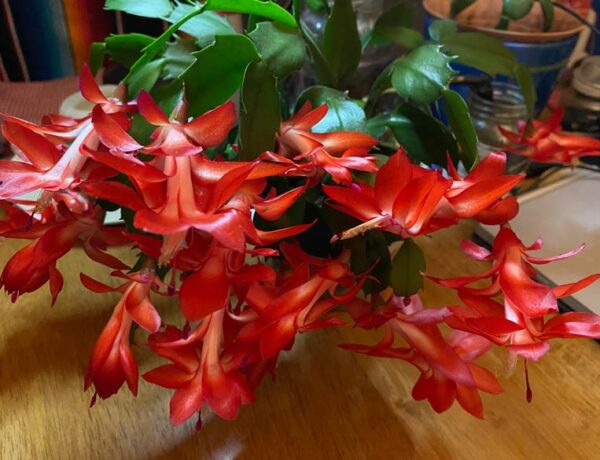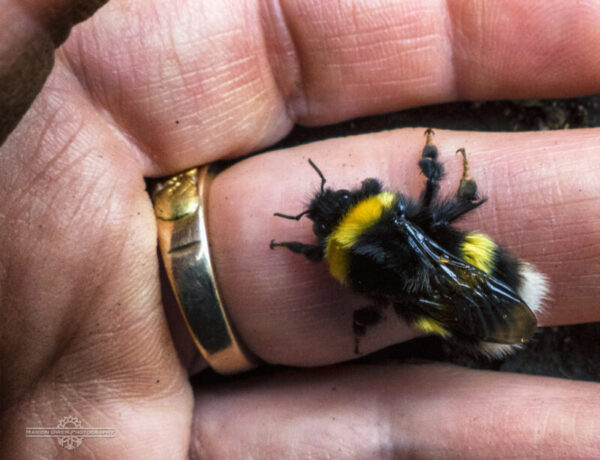With the equinox behind us, I like to think that spring can’t be far behind. The sun tells us so, what with it rising more to the north each day. And then you have crocus blossoms tentatively poking their heads above the ground.
Speaking of crocus blossoms, the other day I ventured out to the hoophouse to see if any turnip and mixed salad greens seeds that I sowed on my birthday a few weeks back had germinated. I lifted the plastic, which formed a heat-saving tent. No such luck.
I picked up a hoe and began fluffing up the compost that I’d dumped in piles on top of the raised beds. Making my way toward the blueberry plants at the other end, I spotted several white and purple crocus flowers bobbing above the rims of two black pots. I’d planted them last fall and almost forgot about them.
[perfectpullquote align=”full” bordertop=”false” cite=”” link=”” color=”” class=”” size=””] I wanted to share my bloomin’ blessings, so I gave one of the pots to my friend Pam. [/perfectpullquote]
Pam was cautious. “Where should I put them?” she asked. “The ground is frozen and I can’t get into the greenhouse. What about inside my apartment?”
“Well, in the warmth,” I said, “they’ll quickly bloom and fade.”
“What about my car… will they be okay there?”
“I bet they’ll be fine. Let me know how it goes.” And I left it at that.
To finish the story, Pam is still driving around town in the style of “Driving Miss Daisy,” (or in this case, “Miss Crocus”) while the bulbs quietly bloom in the back seat.
I share this little vignette because, while the calendar says that spring has arrived, oftentimes the weather wants to convince us otherwise.
[perfectpullquote align=”full” bordertop=”false” cite=”” link=”” color=”” class=”” size=””]Don’t get side-tracked: Stay the course by focusing on a few things that need tending to or staying aware of this time of year.[/perfectpullquote]
For example, don’t let snow and rain keep you from your garden. Take a turn around your yard. Observe where the snow melts away first. Is your rhubarb poking up? Your primroses? What’s the temperature of your soil in your greenhouse. Be an observer, a citizen scientist. The best learning doesn’t come from books.
Are you growing seedlings? I’ve shared some seed-starting tips over the past few columns, but you might be wondering which seeds do NOT need to be started in advance.
[This article was originally published in the Kodiak Daily Mirror, the hometown newspaper for Kodiak, Alaska. You can access the archive page for my past columns, written each week since 1986. One more thing… if you’re not happy with your composting efforts, then I invite you to discover your #1 composting mistake by taking my 60-second assessment here.].
Some plants, especially root crops, don’t transplant well and should not be started from seed.
=== +/+\+ ===
Here’s a basic guideline of which seedlings to start from seed and which ones to sow directly in the soil when the time comes:
Seeds to sow directly (in the soil):
Beans, peas, beets, radishes, carrots, spinach, turnips, and rutabagas.
Seeds to germinate indoors and grow into seedlings for transplanting outside later:
Collards, kale (broccoli, cabbage, cauliflower, etc.), oregano, thyme, cilantro, basil, tomatoes, peppers, leeks, onions, celery, squash, parsley, chives, cucumbers, beans, most annual flowers such as calendula and pansies, and perennials.
Seeds that can grow either way (and much of this depends on how warm the soil is):
Swiss chard, lettuce, mustard greens (as in a mix for salads), nasturtiums, cress, and peas (if you’re careful) fall in this category.
=== +/+\+ ===
As an example, you can start lettuce, arugula, and kale seedlings indoors to get a head start. You can also sow them directly in the soil, say, in June, July, and August, as a mixture to be harvested as “cut and come again” gourmet greens – the same ones you see in the grocery store.
I mentioned perennials earlier, and you might think I’m crazy to bring this up so early, but I’ve noticed that bleeding hearts, blue poppies, and other plants are already showing new growth.
[perfectpullquote align=”full” bordertop=”false” cite=”” link=”” color=”” class=”” size=””]Taking care of perennials in the spring helps them bloom longer in the summer.[/perfectpullquote]
Primroses, for example, will tell you if they need dividing. If they’re growing a tight mass or doughnut circle, they’re sending you a clear message that their shoes are too tight and it’s time to relieve their suffering by dividing and giving them more space to grow by transplanting them elsewhere.
Speaking of dividing plants…
A few Gardening Angels are organizing a spring plant sale as a fundraiser for Kodiak Island’s public radio station, KMXT. The tentative date is Saturday, May 8, just before Mother’s Day. So, mark your calendar and as you stroll around your yard and garden, look for plants that need dividing and consider donating them to the plant sale. That goes for any seedlings looking to take up residence in new gardens. All proceeds from the sale will benefit KMXT.
Back to Pam and Miss Crocus. When she told me that the container of crocus bulbs was living inside her car, I was a little concerned for their safety, as in from a certain Schnauzer named Sam.
“How does Sam deal with the flowers?” I texted.
“Oh, he sniffs,” she said. “Miss crocus goes between the back of the seat and the back seat and is lightly covered with a shopping bag when Sam is in the car.
“Otherwise, she would not survive.”
++++++++++++++++++
Have you considered driving around with flowers in your car? Let me know in the comments.
Meanwhile, enjoy your day,
Marion
P.S. Did you know that compost is the #1 thing you can do for your garden? Join the waitlist for my next FREE composting mini-class. Check out my Joy of Composting Facebook page. To contact me by email: marion (at) marionowenalaska.com.





No Comments